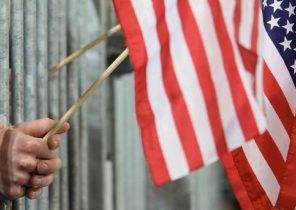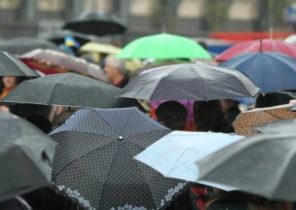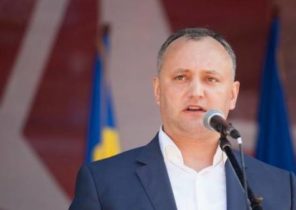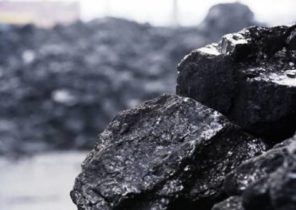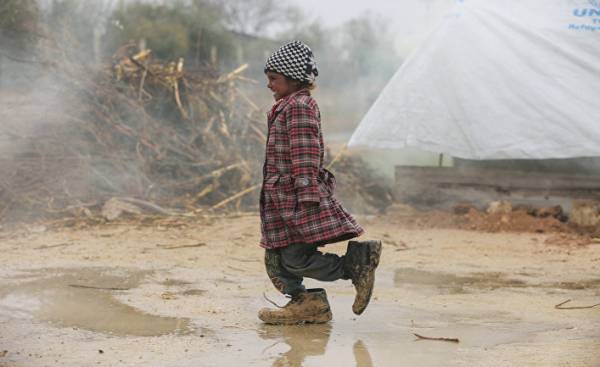
According to one of the Sunni leaders, “it is a mistake to think that the Lebanese Sunnis will benefit from the demographic consequences of migration of the inhabitants of Syria and Palestine to Lebanon. We are more afraid than ever. That is why Prime Minister Saad Hariri shouted in Brussels in a loud voice: “Lebanon became a large camp for migrants, which is about to collapse!”.
At the beginning of the war, the flow of Syrians poured across the Northern and Eastern borders to Lebanon. Naturally, the Lebanese side received them free of charge. However, neither the migrants nor the people of Lebanon didn’t think that situation will last more than a few weeks or months.
Let’s face it: in the North the Syrians fell on Wednesday, with the overwhelming Sunni majority, where they sympathized. As for the province of Bekaa, after his appearance there, the migrants gradually began to concentrate also loyal to him and the Sunni areas such as Arsaliyev and cities in the West of the province of Bekaa.
In connection with the bombings committed in the period between 2013 and 2015 in the southern suburbs of Beirut and Hermel suicide — people from a migrant background, migrants became evident a marked cooling.
The Shiite party has shown unprecedented toughness in relation to refugees, not only at batch level, but also at the level of the entire Shiite community. Currently, Lebanon is undergoing a political dissonance — at least in sentiment — between the Sunni and Shiite sides against the background of the Syrian conflict.
In some cities, the migrants were taken to the municipal and other levels, which was the outflow of refugees from Shiite areas, such as Baalbek and Hermel, and moving them to the side more welcoming Sunni areas of Lebanon such as Akkar, Tripoli, Mine-Danie, Arsaliyev, Sidon, ain al-Hilweh and the surrounding area of Beirut.
The concentration of Syrians in Arsaliyev actually led to the complete dissolution of the city in the sea Syrian migrants. Residents of the city today are in the minority: about 40 thousand indigenous people Arsaliyev, compared with 120 thousand Syrians. Exacerbates the existing crisis is the fact that the city is on the border with Syria where it operates “dzhebhat an-Nusra” (banned in Russia — approx. ed.).
As for the Sunni of the North, reports indicate a significant Syrian “swelling” in the demographic sense. Unemployment increased among local residents, Lebanese lose their labour market, which had previously been narrow. There is an increase in the number of Syrian students in schools, increasing the load on hospitals, mains electricity and water, as well as other objects already weak infrastructure.
This picture of the official Lebanon broadcasts international delegates who recently demanded the normalization of the status of Syrian refugees, and with this information the Prime Minister of Lebanon arrived in Brussels. But the approach adopted by the international community to solve this problem, does not remove the fear.
Significant to resolution of this issue is to stop the war in Syria. After this it will be possible to conduct difficult negotiations, which can take years to regain those Syrians who return back to their homeland… important here is the participation of President Bashar al-Assad, and the recognition of other stakeholders, including Lebanon.
Syria has already changed the demographic map of the Middle East. How about Lebanon in this case? Jordan, with its Palestinian majority? What to say about Iraq, Yemen and possibly Turkey?
Thus, there is a real danger of turning Lebanon into a “big camp” for migrants. Naturally, the Lebanese Sunnis are afraid more than others.
One of the prominent Sunni figures believed that “we haven’t gotten rid of the idea of “Palestinians — Sunni army”, as has reached the new statements that the Syrian migrants will restore religious terror in Lebanon, fighting against Hezbollah. No… we don’t want neither the Syrians nor Hezbollah!”
Behind the scenes political actions suggests an expression that no one dares to voice.
If Syria is changing demographically, it is inevitable, and Lebanon will change. Why?
Today in Lebanon, without regard to early marriage and high fertility among migrants, about two and a half million Sunni Syrian and Palestinian origin. Most of them are based in Sunni areas, where the number of the Lebanese population does not exceed 1.5 million. This means that in the first place, the demographic crisis will manifest itself in the Sunni environment, consisting of Lebanese, Syrians and Palestinians.
Shiites, Christians and Druze showed great toughness against migrants. The latter believe that the best conditions for their stay is a Sunni environment, and “migrate” there. Thus, at the national level, there is a significant demographic imbalance, which will entail a variety of consequences.
And at this time in Lebanon the correlation appears in the form of 3.5 million 1.5 million Sunnis against Shiites and Christians 1.5 million (approximate figures). Will be self-evident to ask the patient a question: will all of Lebanon to support Assad, or, given the above circumstances, the Lebanese are divided in their choice?
The refugee crisis has created an extremely dangerous situation in Lebanon. Who knows when there will Wake up those who want to do business on the refugee problem, approaching the problem only from the point of view of financial gain?
The history will show.
